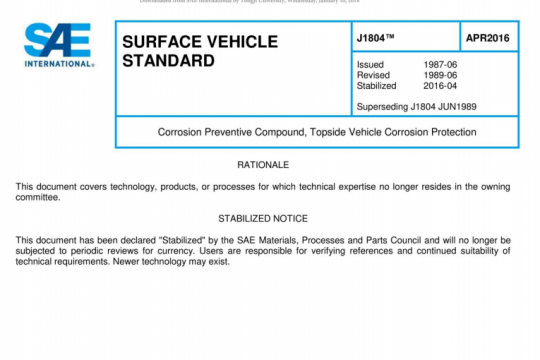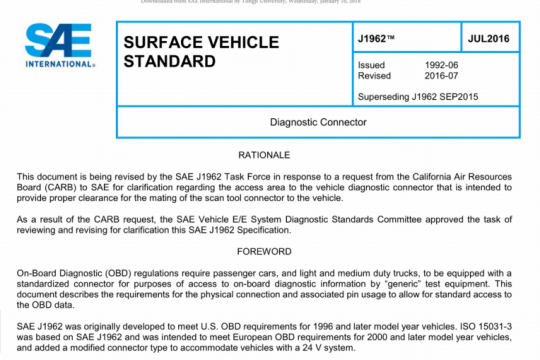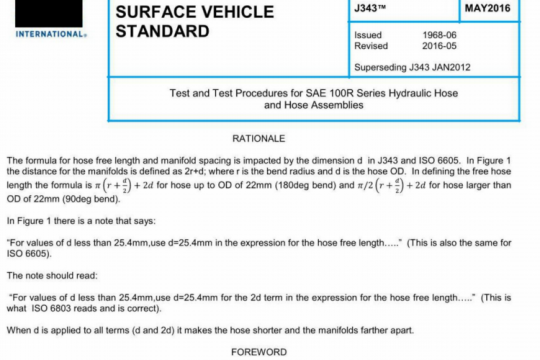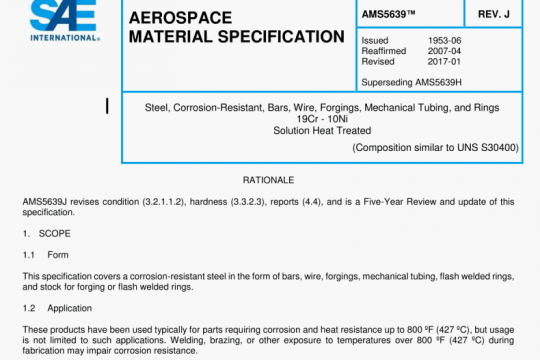SAE J1269:2019 pdf free
SAE J1269:2019 pdf free.Rolling Resistance Measurement Procedure for Passenger Car,Light Truck, and Highway Truck and Bus Tires
The ambient temperature surrounding the test tire should be held between 20 °C (68 °F) and 28°C (82°F). An average ambient temperature is recorded for each of the test points. AlI rolling resistance values must be adjusted to the Ambient Reference Temperature of 24°C (75°F)(see 7.4 ).
Tires that undergo significant permanent change in their dimensions or material properties upon first operation require a break-in and cooling period prior to the start of the test. Break-in is accomplished by operating the tire at test point 1 (5.1) for a period of time as follows: 1 h for passenger car and light truck tires, 2 h for highway truck and bus tires. After the break-in, a minimum cool down period to test room temperature is required for the following: 2 h for passenger and light truck tires, 6 h for highway truck and bus tires.
Test tire and rim must be placed in the thermal environment of the test location to achieve thermal equilibrium before testing. The following period of time is needed; 2 h or more for passenger and light truck tire, 6 h or more for highway truck and bus tires. If the standard test is used (5. 1), the tire must be inflated on the test rim at least 1 h before testing.
Compensation for both load-spindle force interaction (“crosstalk”) and load misalignment must be determined for each of the test points (5.1 or 5.2). This is accomplished either by recording the spindle force for both forward and reverse tire rotation, or by dynamic machine calibration. If spindle force is recorded for forward and reverse direction (at each test condition), compensation is achieved by subtracting the “reverse’ ”value from the “forward” value and dividing the result by two. If dynamic machine calibration is elected, the compensation terms may be easily incorporated in the data reduction process.SAE J1269 pdf free download.




